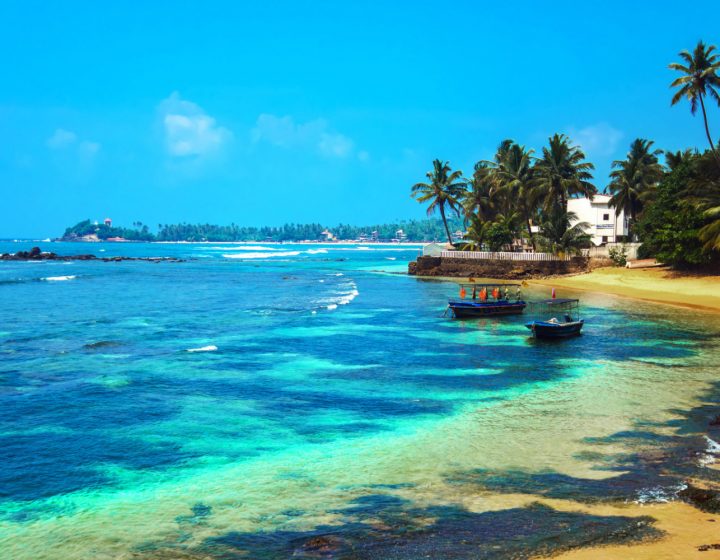Sri Lanka Highlights
Your comprehensive travel guide to Sri Lanka - All in one place!
An ideal destination to visit would be where you can find lustrous tea gardens, golden beaches, chirpy environment, emerald forests and Sri Lanka is just that! This pear-shaped island country is amongst top tourist destinations. In Sri Lanka, a plentiful moment of serendipity waits, and if you have not visited here yet, there is no time for you to waste. Visit Sri Lanka to fill up that one blank space in your travel bucket list where you wanted to place a travel destination that was full of life, warm people and exotic places.
History and Government
The island of Sri Lanka appears to have been inhabited since at least 34,000 years B. C. Sinhalese immigrants from northern India likely reached Sri Lanka around the 6th century B.C. They may have established one of the earliest great trade emporiums on earth; Sri Lankan cinnamon appears in Egyptian tombs from 1,500 B.C. In 1505, a new kind of invader appeared on Sri Lanka's shores. Portuguese traders wanted to control the sea-lanes between the spice islands of southern Asia; they also brought missionaries, who converted a small number of Sri Lankans to Catholicism.
In 1815, a final European power appeared to take control of Sri Lanka. The British, already holding the mainland of India under their colonial sway, created the Crown Colony of Ceylon. After more than a century of colonial rule, in 1931, the British granted Ceylon limited autonomy. During World War II, however, Britain used Sri Lanka as a forward post against the Japanese in Asia, much to the irritation of Sri Lankan nationalists. The island nation became fully independent on February 4, 1948, several months after the Partition of India and the creation of independent India and Pakistan in 1947.
Geography
The Democratic Socialist Republic of Sri Lanka (formerly Ceylon) is an island in the Indian Ocean, separated from south-east India by the Palk Strait. It is almost linked to the Indian mainland by Adam’s Bridge, an atoll barrier, mostly submerged, lying between the offshore island of Mannar and India itself. The pear-shaped island of Sri Lanka is largely flat and rolling. The terrain is distinguished by a cluster of mountain peaks, the highest of which is the Pidurutalagala in the south-central region of the country.
The surface drainage of Sri Lanka is made up of about 100 rivers, most of which are mere wet-season rivulets. With the exception of the 208-mile-long Mahaweli River, all major rivers flow radially from the Central Highlands to the sea. The Mahaweli, which originates on the western slopes of the highest areas of the highlands, follows a circuitous route in its upper reaches before it enters the plain to the east of the highlands and then flows toward the northeast coast.
Population
Sri Lanka may seem like a small island lying southeast of India. However, it has a significant population of 21.32 million in 2019, with the densest areas lying in the urban areas such as the capital, Colombo and other large cities that are also the industrial and economic hubs of the country. It is growing at a rate of 0.913% annually and houses people from many different ethnicities and religions, which gives the country a multi-cultural and multi-ethnic identity. Sri Lanka is the 58th most populous country in the world.
Culture
Sri Lanka is one of the few countries with a very vast and rich cultural diversity. The culture is itself very unique and thereby contributes to the Sri Lankan identity. Sri Lankan culture is often reflected by the use of art, architecture, sculptures, and even food. One of the main features of the culture is its Indian and European influence. Since most of the time Sri Lankan kings married Indian princesses they incorporated Indian culture but still preserving the unique Sri Lankan identity. The European influence was a result of invasion from the Dutch and Portuguese and finally the British. Hospitality is also one of the prominent characteristics of the culture, making Sri Lankans one of the friendly nations in the world.
Food and Drink
Food in Sri Lanka can be hot or very mild or can be a combination. Sri Lankan food is unique for its culture. Many Sinhala food items are derived from Chena cultivation. Sri Lankan cuisine plays a vital role in the islanders’ life from the most auspicious Sinhala/ Hindu New Year to normal day-to-day practices. They make milk rice and special sweets with coconut milk, flour and honey at cultural festivals. The curry comes in many verities of colors and flavors blended in Sri Lankan Hot Spices.
Festivals
Sri Lanka is home to four main religions and celebrates 25 public holidays throughout the year making it have one of the busiest calendars in the world! The majority of festivals in Sri Lanka are Buddhist, Hindu, Muslim celebrations and public holidays. The significant Buddhist festivals are typically celebrated with large parades through the streets with impressively adorned elephants, colourful dancers and drummers – the most famous being the Esala Perahera in Kandy.
Best Time to Visit
The best time to visit Sri Lanka depends on which part of the country you’re going to. It’s a year-round destination with consistent warmth and lots of sunshine, with temperatures averaging between 31℃ at their highest and 22℃ at their lowest. The southwest coast is best between December and April, before their monsoon season starts, while the east coast and the north is less humid between May and September when their monsoon season is over. The central hills remain cooler all year round and we’d only recommend avoiding them in October and November when the rainfall is less predictable.
+374 55 56 66 56 24/7

